December: The Wonders of Winter
Frontenac State Park Association newsletter
Vol. 1, No. 9, December 2023
December: The wonders of winter

Who doesn’t love December in rural Minnesota (Well, snowbirds aside.) It’s a beautiful month in the country, especially when holiday lights, or better yet, the moon and piercing stars illuminate fresh snow.
But at the risk of sounding Grinch-like, may we say that sometimes, December is too much of a good thing? All that shopping and spending, cooking, cleaning, card-scribbling, Facebook-post-liking, hosting, visiting, drinking, eating and manic Fezziwiggian good cheer are great, but … sometimes, don’t you just want to walk outside in a quiet place and feel the cool wind on your face without someone ho-ho-hoing at you?
Us too! And you know where we go, friends – to Frontenac State Park! If it hasn’t snowed a lot by the holidays (and we hope it has), you can hike the trails and enjoy the broader vistas exposed by bare trees. If the snow has piled up, here are some things you can enjoy, solo or with your family, in the park:
The sledding hill: It’s so much fun! And all ready to go once it snows more. Park in the park office lot, where there is a warming shelter, and follow the marked trail to the nearby hill. Says park manager Jake Gaster, who loves a good winter day outdoors, no doubt with his two little kids: “It’s over 100 feet high and almost ⅙ mile long and is an absolute blast!” There’s a picnic table and fire pit at the base of the hill. If you don’t have a sled, you can borrow one from the park office.

Cross-country skiing: The park will groom 9.6 miles total of cross-country ski trails for both classic and skate skiing in three areas – the Bluff Loop, the Prairie Loop and the Sand Point Loop. The first is moderate to difficult, while the second and third are easy-peasy (not that that’s an official category). On the park’s winter trails map, ski trails are shown as solid green lines, with hiking trails portrayed by purple dash lines. Says Jake: “As our grooming efforts rely on natural snow accumulation, the quality of our trails is dependent on the weather. It’s important for hikers – especially those with dogs – to stay off groomed ski trails. We have several short sections of trails designed to accommodate both hiking and skiing, but please pay attention to posted signs that say whether you should hike there or not.”
Snowshoeing: Once the snow piles up, the park is a snowshoer’s heaven. More on that in our January newsletter, but for now, know that you can rent snowshoes at the park office if you don’t have your own. (Hm … snowshoes … something for your holiday gift wish list?)
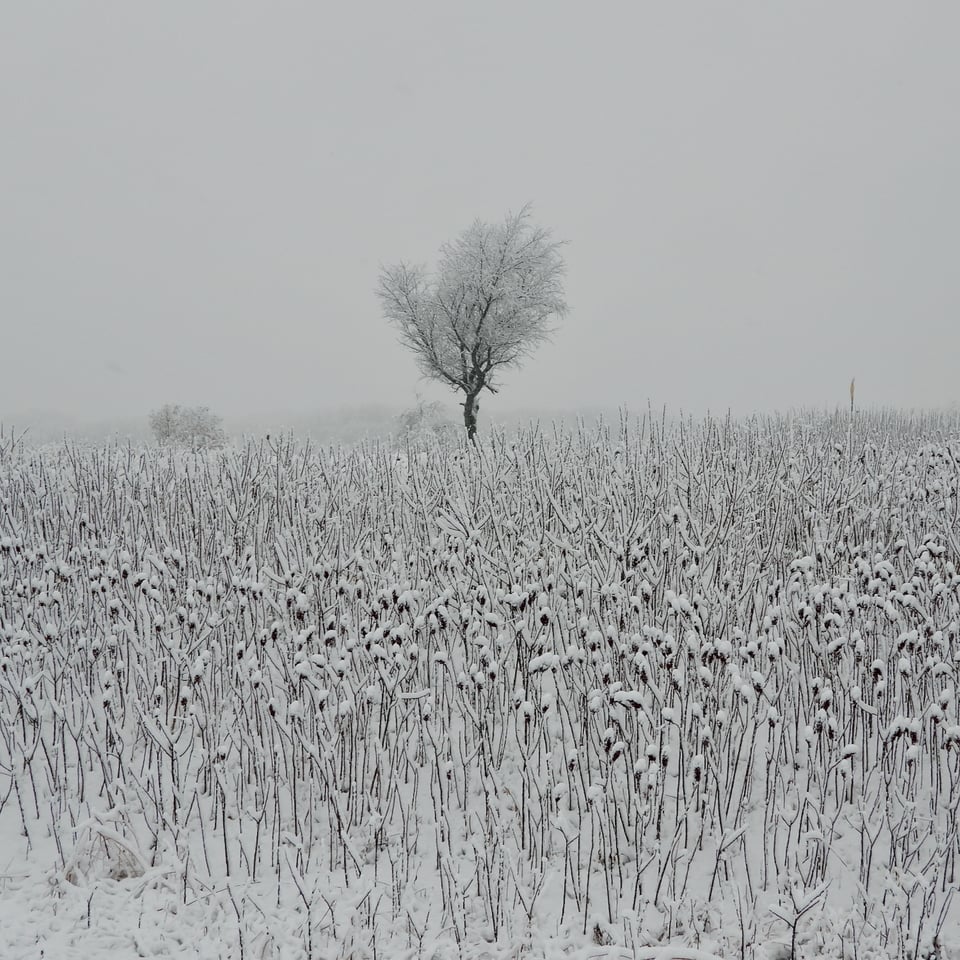
Mark your calendar: Jan. 1 is First Day Hike
For better or worse, 2023 has raced by. Here’s a great way to welcome the new year – with our self-guided First Day Hike (or snowshoe or ski trek). Wander (or trot – you may need to in order to stoke the body’s furnace on Jan. 1) groomed trails, and when you’re ready to rest and warm up, FSPA members will have roaring fires, hot coffee, cocoa, s’mores and other snacks waiting for you at the main picnic shelter at the top of the bluff.
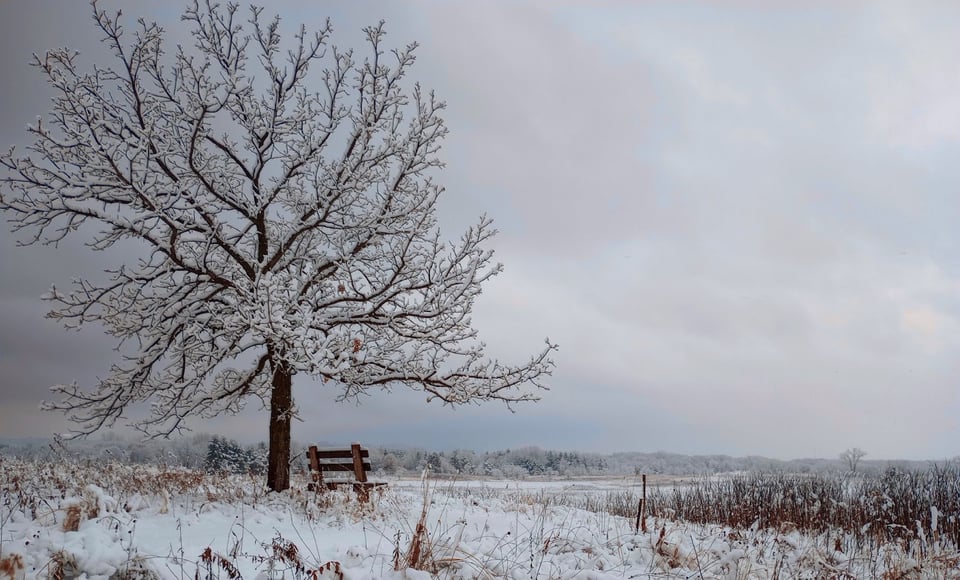
Three things we’ve been admiring

First, like us, you may be impressed by how much of the park’s prairie was subjected to prescribed burns in late October. The weather this year hadn’t been very cooperative for burning till then. FSPA member Barb Partington snapped the photo above after a burn; even a charred log holds beauty.
Second, check out the buoying high water level on Pleasant Valley Lakelet. As you read in our October newsletter or the Lake City Graphic, an unexpected intervention by some damming beavers reversed an alarming draining trend there, saving the pond for birders and anglers and saving taxpayers more than $2 million in repair costs.
Third, our FSPA website has been updated, and it’s beautiful! Major thanks to the above-mentioned Barb Partington, a whiz not just of all things natural, but of technology, too.

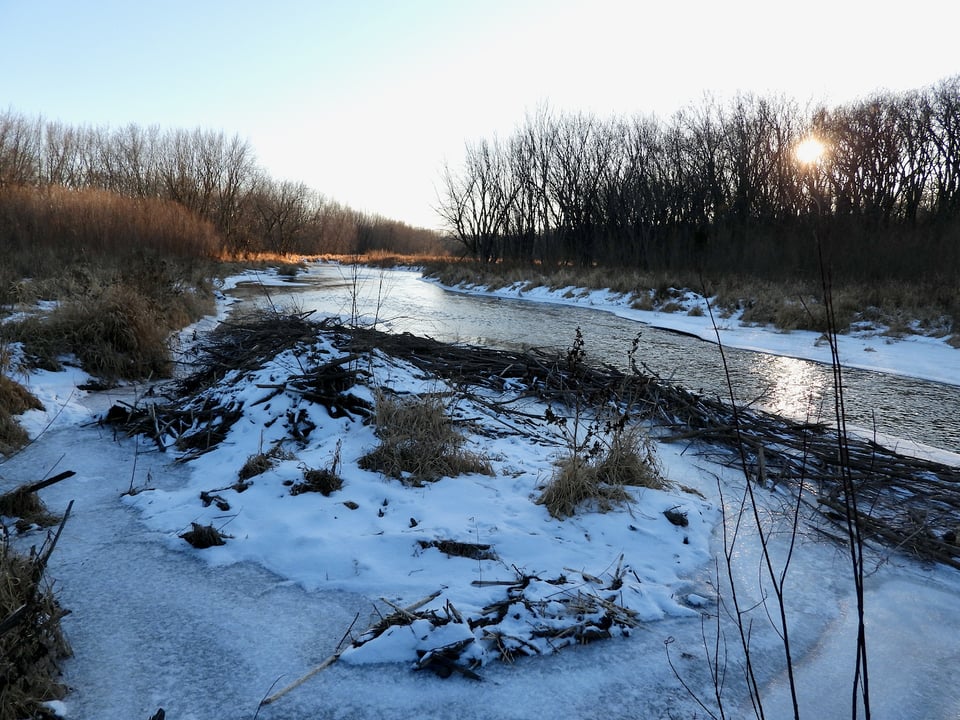
The big picture for 2024
At their annual meeting on Nov. 16, held in the park’s main picnic shelter as a warm fire burned in the old stove, FSPA members swapped greetings and some hair-raising wild-animal tales (we’d share them, but we’re not sure they’ll all 100% true), and laid out ambitious plans for 2024.
We also welcomed assistant park manager Amy Jay, back from maternity leave after giving birth to extremely cute little George Jay in August. Congrats, and so happy to have you back, Amy!
Our list of upcoming activities is long and exciting, but instead of presenting them all here, we’ll include each month’s events in upcoming newsletters.
What shapes our plans? In keeping with the Minnesota Department of Natural Resources’ recommendations for state park friends groups, our activities fall within three main categories:
Presenting and supporting interpretive and outreach programming (for example, leading nature walks and bioblitz events)
Supporting the park’s natural resources and operational needs (for instance, collecting seeds and cutting buckthorn)
Promoting FSP's proud status as a premier destination for birds and birders (lots of bird walks coming up in 2024 – join one; we guarantee you’ll see birds you’ve never seen before!).
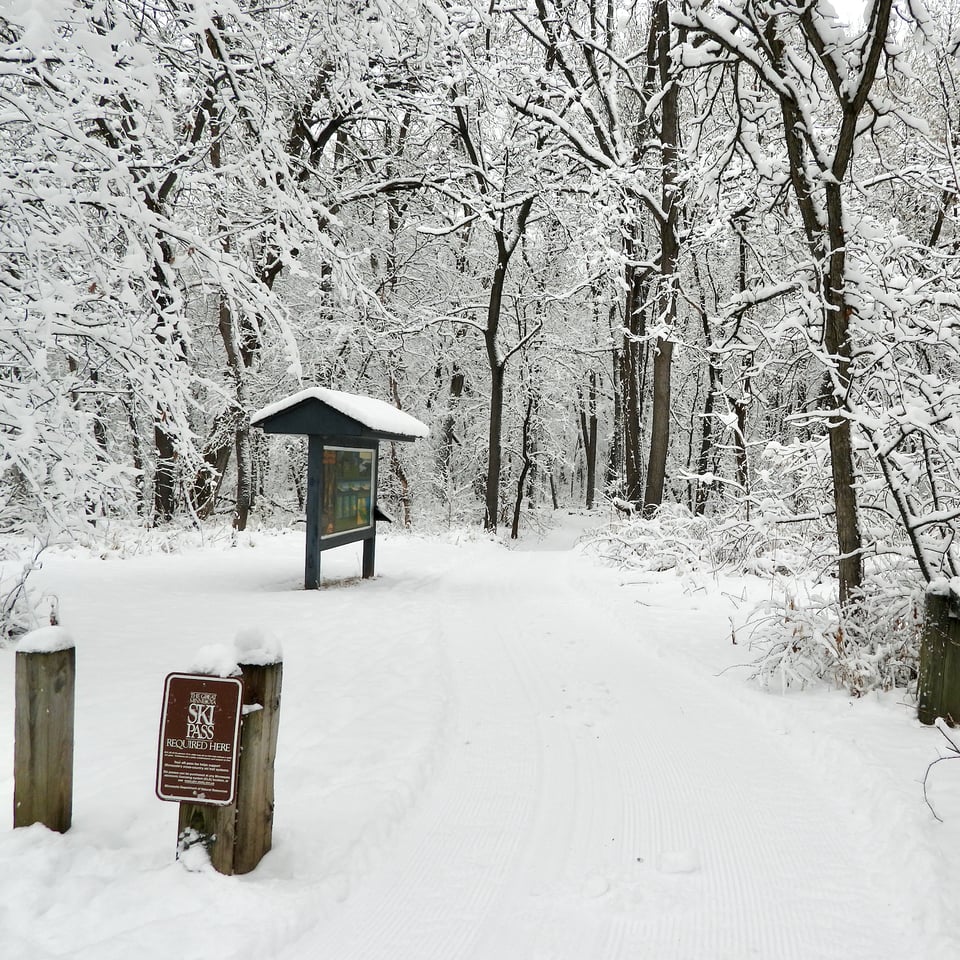
At their meeting, FSPA members also debated changing our membership fee structure to address a concern that it’s unfair to single members. Till now, the fee has been $25 for singles and $30 for couples. After much discussion in which the group’s many couples expressed concern that $50 for couples would be steep for them but singles said they still want to pay at least $25, the group voted for a middle ground for 2024 – $25 for singles and $35 for couples/families. We’ll revisit that at our next annual meeting.
Where, you wonder, do those dues go? Along with generous donations from members and visitors who stuff dollar bills into our donation box during our events, our dues are used to buy treats for park visitors on special days and lots of smallish park outreach projects. Recent examples include stamps and informational business cards, beautiful murals for the picnic shelter, falcon programs, and a park vehicle permit donation to the Hispanic Outreach Council of Goodhue County. One idea for 2024 is to provide a Little Library for the park’s campground full of donated nature books.
At our annual meeting, one wag (and wow, our group is full of wags) cracked, “I figure I’m paying for the camaraderie with you all,” and everyone laughed – but it’s true. Our members are an amazing bunch – of many ages and backgrounds, and everyone seems to know something unique about nature. In our group are people who know how to build shelters, break trails, identify and harvest prairie seeds, build and clean bluebird nests and tally their populations, spot rare birds and teach you to do the same, identify wild mushrooms that won’t kill you, do prescribed burns, and other important and delightful skills. In short, we have fun!
So if you love Frontenac State Park and like that sort of fun, join us. And a reminder that you do NOT have to be a dues-paying FSPA member to join our events. Especially when it comes to activities like collecting or spreading native prairie seeds or tree-planting, everyone is welcome to help out (and bring your kids)! Watch our newsletter for opportunities.
Bird notes: Our December ducks – and how they keep warm
By Janet Malotky, Minnesota Master Naturalist volunteer and FSPA member
Fall migration stirs a mist of melancholy, for while it’s exciting that our little friends come visiting on their way south, they don’t stay, and they’re trailing winter in their wake. Bird and bird species numbers continue to drop, and they stay low until spring.
A few birds, however, arrive from the north in late fall and stick around for a while to brave the fierce winter weather with us. We see rafts of them in December, bobbing in open water surrounded by ice. They’ll stick around for as long as they can find open water.
Most of these are mixed flocks of Common Mergansers, one of our largest duck species, and Common Goldeneyes. They breed in Canada and Alaska, then fly south for the winter, mostly to large freshwater rivers and lakes in the United States, like the Mississippi and Lake Pepin. Some, especially Goldeneyes, also winter off the Pacific and Atlantic coasts.
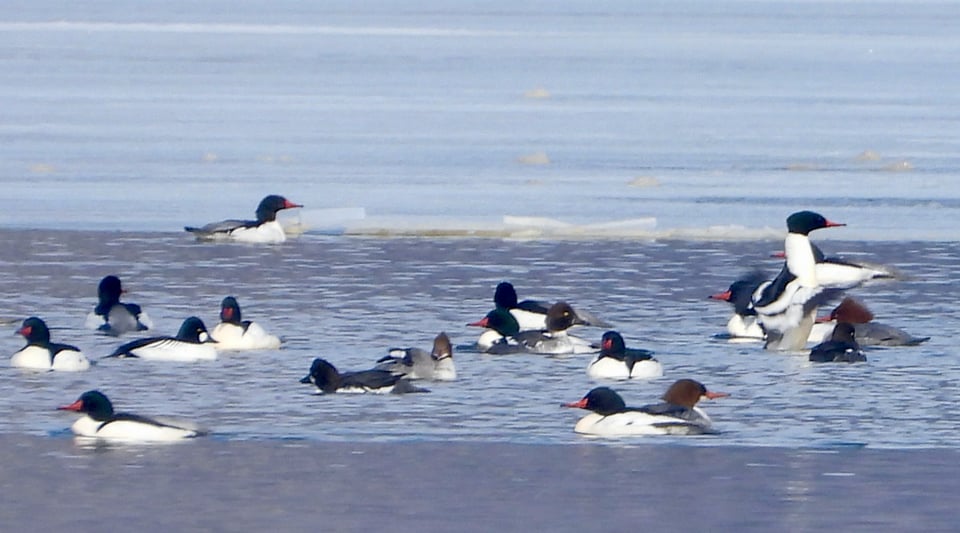
Common Merganser and Common Goldeneye males are mostly white-bodied with some black on their backs. They have dark green iridescent heads that usually appear black, as in the photograph above, taken at Sand Point. The females of both species have warm brown heads and brownish-gray bodies. In addition, female Mergansers have jazzy crests of brown feathers on their heads (best seen on the far right center bird under the flapping male’s wing). In the photo, all the birds with orange-red bills are Common Mergansers. Two Common Goldeneyes can also be identified. The Goldeneye male, center left (facing right), has a round white spot just below and forward from his eye. The female is a few duck-lengths ahead of him, just right of center, also facing right and in profile. Her brown head is the same triangular shape as her mate’s. And of course, both Goldeneyes have golden eyes.
You may wonder how in the world these birds keep from freezing to death. The first part of the answer is that their bodies are thickly covered with down underneath their feathers, which traps an insulating layer of air next to their skin. In addition, they keep their feathers waterproofed by rubbing them with oil from special glands when they preen. Lastly, they (and many other birds and mammals) have a remarkable circulatory adaptation, a “countercurrent heat exchange system” that keeps their core temperature at a more steady state, while still keeping their feet and legs from freezing.
It works like this: The cool venous blood heading back from the feet toward the heart passes very close to the warm arterial blood leaving the heart toward the feet. The cool blood gets warmed up a bit as it passes the warm blood, so by the time it gets back to the heart it doesn’t cool the bird’s core down as much. At the same time, the warm blood heading for the feet gets cooled down a little bit as it passes by the cool blood. This is OK because, since the feet and legs are mostly bones and tendons, they don’t need to stay as warm. Because the feet and legs have very little insulation, there is less heat lost to winter’s chill than there would be if the blood was still warm.
Common Mergansers and Common Goldeneyes are diving ducks. Both species eat fish, aquatic invertebrates (mollusks, snails, insects and their larvae), and aquatic plants. Common Mergansers also eat frogs, small mammals, and birds, which they grip tightly with the serrated edges on their bills. This unusual bill feature has earned Mergansers their nickname: Sawbills.
Bald Eagles can frequently be seen hanging out at the edge of the ice where the ducks are fishing. Although eagles have been observed hunting and eating these birds, this seems to be rare. Mergansers and Goldeneyes are more vulnerable to predation when they are chicks. By the time they arrive in our park, they are fully grown, and their main concern when it comes to eagles is protecting their catch. Eagles are ready to filch a fish at the first opportunity.
And when you’re a duck trying to make it in a cold northern winter, you need all the fish you can catch.
Notes from the field: Isaac the Peregrine Falcon
By Steve Dietz, Minnesota Master Naturalist volunteer and FSPA president
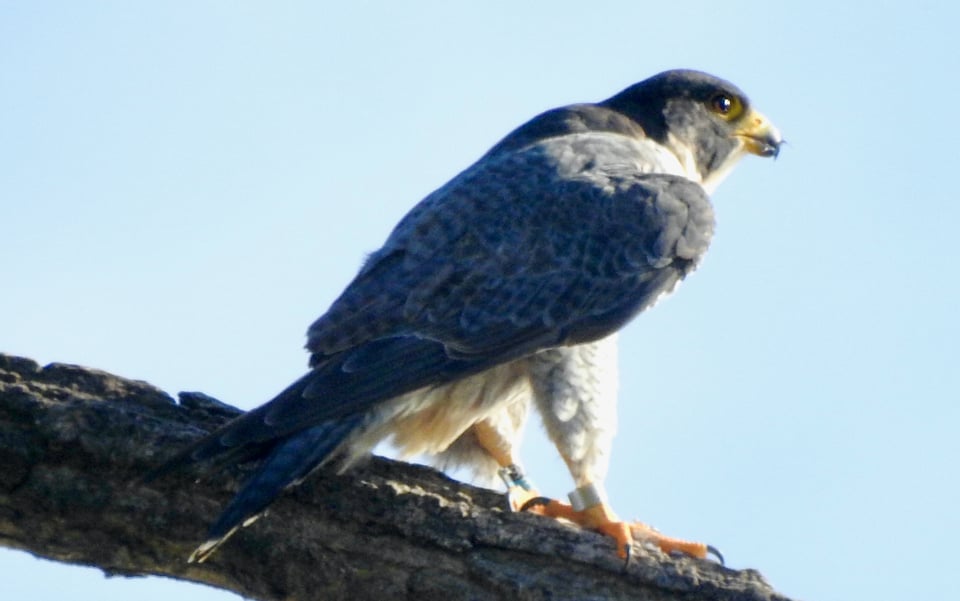
There is so much we still have to learn about birds! For instance, the (amazing) Minnesota Breeding Bird Atlas tallied a total of 263 detections of the Connecticut Warbler in Minnesota, but only two confirmed breeding, and some sources say there have been only 10 confirmed nests in Minnesota since 1929.
That’s not much to go on, but it doesn’t mean that the bird doesn’t breed here more frequently. This is the kind of situation where citizen science can help. Especially if we start seeing banding.
While there are increasingly sophisticated ways in which birds can be monitored, including radio trackers, satellite and cellular GPS, GPS data loggers and geologgers, the most common method remains banding. Birds are banded as nestlings or after being captured in nets. Bands are generally attached to their legs, although IDs can also be attached to the neck or a wing.
Getting the band on, however, is only step one. The process of tracking requires that someone spots the band and reports it.
I have reported bands on Snowy Owls and Trumpeter Swans, and it is always exciting to put a name to a bird and to find out more about that bird – how far it is from where it was banded, its age, its sex.
On one occasion, I learned way more than “serial number and rank” about a local Peregrine Falcon.
I saw the falcon in a tree on the end of Sand Point in September 2021. At first I was fixated on what was in its mouth. Was that some leftover gull or did the falcon eat insects (rarely, it turns out)? Eventually, however, I noticed the bands on its legs. Fortunately, it seems to have been enjoying a postprandial rest, because it did not fly away immediately, and I was able to see and record “Black band with ‘97’ visible over blue band with ‘B’ visible on left leg, metallic band on right leg.” That didn’t mean much to me, but I posted the sighting on eBird, and an observer contacted Amy Ries of the Raptor Resource Project.
Amy shared this story:
Thank you so much! That is an awesome photo of 'Isaac' 97/B. Isaac was banded at Skidmore Bluff [in Pierce County, Wisconsin] in 2018 by RRP director John Howe, with the help of my youngest one, Isaac! It's great to see him alive and well! … Although we have a nestbox on this bluff, the birds usually go for a pothole on the upstream/left side of the cliff. He wasn't far from his natal nest at all when you saw him!
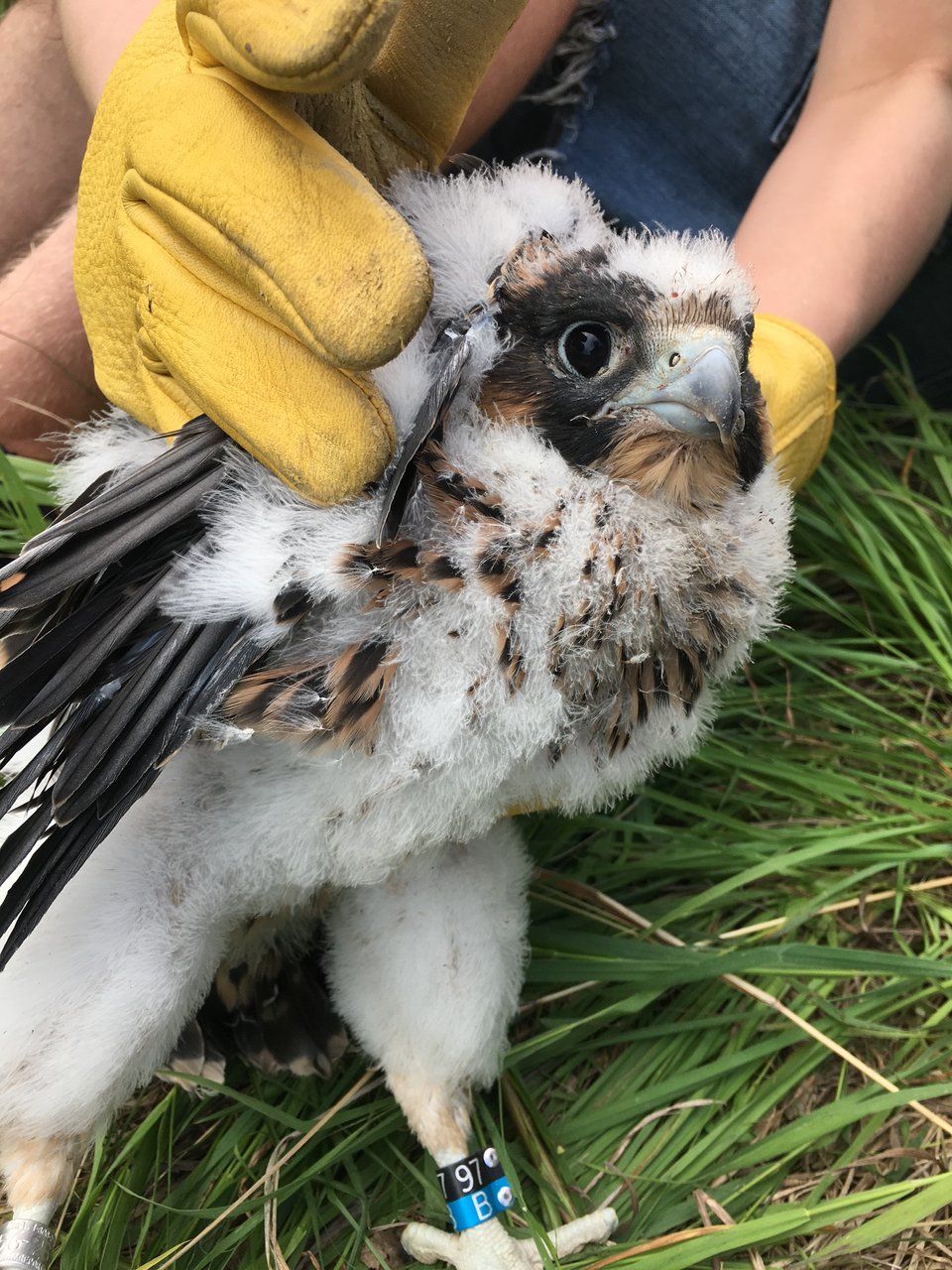
Awwwww.
Park profile: Harry Roberts, park manager from 1987 to 2013
By Pamela Miller, Minnesota Master Naturalist volunteer and FSPA member

Even after years in which he sometimes viewed them several times a day, Harry Roberts still catches his breath when he gazes out from Frontenac State Park’s signature overlook.
“That view,” he said, shaking his head in wonder. “It’s really something.”
Ditto for the two other overlooks just down the overlook’s paved trail to the southwest, which many park visitors don’t take the time to hike to. Countless times, Harry has walked to them and sat on their wooden benches to admire the Mississippi River/Lake Pepin views.
In his 26 years as the park manager (1987-2013), Harry, now 73, saw a lot of change come to the park, but the views remained the same – spectacular. We sat down with him after November’s FSPA annual meeting to talk about his career.
Harry, who lives in Red Wing with his wife, Debbie (they have three grown children and five grandkids), was born in Clear Lake, S.D., and moved with his family to rural Minnesota at age 5. By the time he was a teenager, he knew he wanted to work in the natural sciences – not in a classroom or lab, but outdoors.
“I came to this work through the back door,” he said, studying recreational research management at the University of Minnesota, including two years on the Morris campus. After college, Harry accepted a paid internship position with the Genesee, Mich., County Parks and Recreation Commission, where he worked for various division directors – from park maintenance, planning and interpretation to administration. Upon completion of a one-year internship, he was hired as a naturalist for three months.
In July 1975, Harry returned to Minnesota for a temporary laborer job with the state Department of Natural Resources’s Division of Parks and Recreation. That October, he was hired as the division’s state park planner. Over the next five years, he completed detailed development plans for several parks in northeastern, central and southwestern Minnesota. Then he transferred to the DNR’s Trails Division and worked on the statewide management plan for state trails for two years.
Harry got his first chance to transfer into a field park position in November 1982, accepting the assistant park manager position at Lake Carlos State Park near Alexandria. In January, he jumped at the chance to move to a manager’s position and headed south to Frontenac, succeeding Mark Eichten upon his retirement.
The ensuing years would see dramatic changes for the park, many of them shepherded by Harry. Its boundaries rapidly expanded as it purchased nearby properties, including the former George Santelman, Myron Chase and Kuhl family (Rattlesnake Bluff) properties, as well as some land from the Villa Maria, park additions totaling nearly 1,000 acres.
Harry says he’s proud of the strong support staff he helped build during his time in the park, as well as strong connections the park forged with groups like the Frontenac Sportsman’s Club, the Lake City Chamber of Commerce, Lake City Forestries and Fisheries, the Mississippi Valley Partners tourism group, and the FSPA. He even had a hand in supporting the area’s storied 100-mile spring garage sale. “I like to tie things together,” Harry said.
All of those connections, he said, helped increase interest in the park – and attendance.
Frontenac seemed to have a reputation for excellent customer service, and most of our visitors were pleased with the service, clean bathrooms and quietness,” he said. “The number of return visitors indicated this high level of satisfaction.
During his stewardship, resource management practices also evolved, with prairie restoration, work on equestrian trails and campgrounds in the Zumbro Bottoms area, prescribed burns, and invasives removal becoming far more frequent. “One of the invasives we went after was purple loosestrife, which was just choking out the pond,” he said. “We spent a few hours pulling it out by hand before we said, enough of that.” What worked better, he was glad to say, was some impressive science involving use of a loosestrife-eating beetle to clear it out.
Other changes he saw: an improved park office and other structures, and an end to the practice of the park manager living on park land. And over the years, he also was a witness to habitat changes in the park, such as the constant migration of sinuous Wells Creek.
Harry’s time as park manager was not without challenges. State hiring freezes and budget restrictions made it hard to accomplish some goals. And as the years went by, he found his work overseen by more bosses and more bureaucracy. “At first, I spent lots of time in the field, doing things myself,” he said. “Later, it was more of a desk job, dealing with bureaucracy and obstacles like liability issues.”
In retirement, Harry continues to enjoy hiking and biking as health issues allow. He loves the park’s kaleidoscope of wildflowers. And he never misses a chance to admire that ever-impressive park overlook.
Frontenac State Park is “unusually interesting” because it has three wild communities – river bottomlands woods, the prairie oak savannah, and the maple-basswood-elm-aspen bluffland forest, he said. The same things that make it a great place to visit also made it a great place to work, he said. “I was blessed to work here,” he said.
’Tis the season for … a wild mushroom??

For obvious reasons, December in Minnesota is not a field month for students of wild mushrooms. But we can’t resist writing about the one pictured above, which you may recognize as a major motif in European Christmas tableaus – the spotted bright red fly agaric (Amanita muscaria). Isn’t it beautiful? They’re usually found well north of here (orange and yellow ones are common in northern Minnesota), or in the Pacific Northwest or Europe. This one was found this fall, in, of all places, Frontenac State Park, by our sharp-eyed park manager Jake Gaster. We’re thrilled to know that something so beautiful grows in our beloved park’s woods. (Side note: Like most amanitas, it’s poisonous. Admire it, photograph it, but don’t pick/eat it.)

Two wee poems for your hectic December
“Blue Winter”
By Robert Francis (American; 1901-1987)
Winter uses all the blues there are.
One shade of blue for water, one for ice,
Another blue for shadows over snow.
The clear or cloudy sky uses blue twice –
Both different blues. And hills row after row
Are colored blue according to how far.
You know the bluejay's double-blur device
Shows best when there are no green leaves to show.
And Sirius is a winterbluegreen star.
“Dust of Snow”
By Robert Frost (American; 1874-1963)
The way a crow
Shook down on me
The dust of snow
From a hemlock tree
Has given my heart
A change of mood
And saved some part
Of a day I had rued.
Interested in joining the FSPA?
We’d love to have your support (starting in 2024, dues are $25 per year for an individual, $35 for a couple). Here is a link.
A reminder that joining us occasionally to help the park out with volunteer efforts is awesome too, even if you’re not a member. The FSPA’s goal is simply to share our love of Frontenac State Park with as many people as possible.
To sign up to regularly receive this monthly newsletter, click on “Subscribe” below. Feel free to send questions or comments to your newsletter editor at pamelamarianmiller@gmail.com. Questions about the FSPA? You can reach FSPA chair Steve Dietz at stevedietz@duck.com.
Handy links for more information and education
Frontenac State Park website
Frontenac State Park Association website
If you take pictures in the Park, tag us on Instagram
Frontenac State Park bird checklist
Frontenac State Park on iNaturalist
Parks & Trails Council
Website for our township, Florence Township
Minnesota Master Naturalist program
Red Wing Environmental Learning Center
Lake City Environmental Learning Program on FB
Frontenac State Park staff
Jake Gaster, park manager; Amy Jay, assistant park manager; Amy Poss, lead field worker
Parting shots

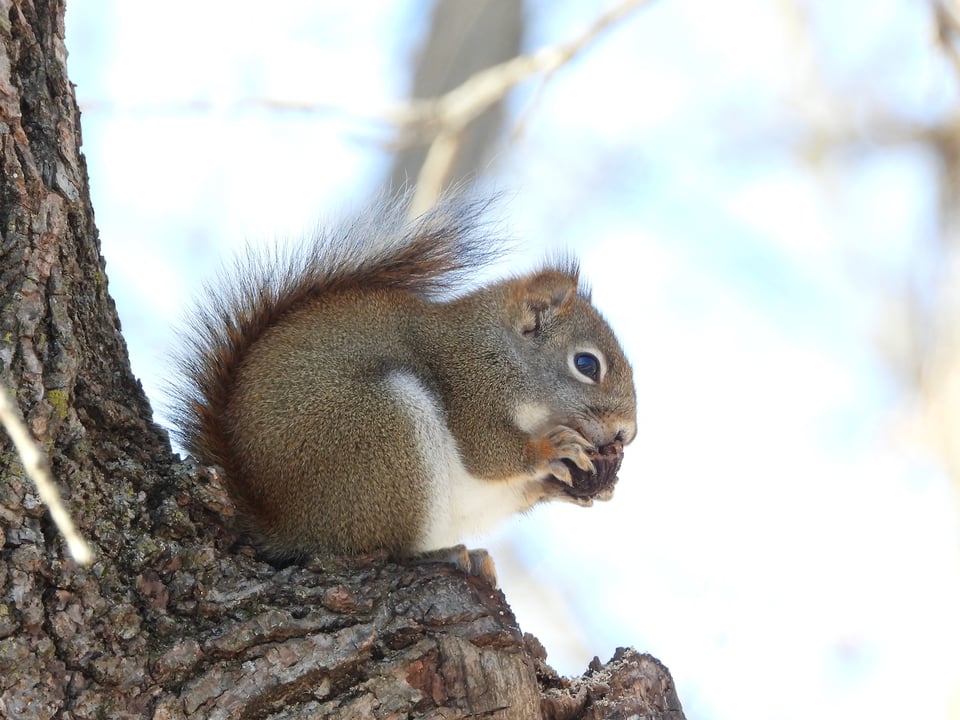
Thank you, readers and park visitors!
This is Volume 1, No. 9 of the Frontenac State Park Association newsletter, which was launched in April 2023.